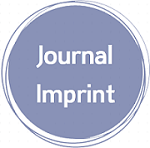Age- and Sex-Related Reference Intervals of Prothrombin Time and Activated Partial Thromboplastin Time
Downloads
Doi:10.28991/SciMedJ-2023-05-03-01
Full Text:PDF
Downloads
Grover, S. P., & Mackman, N. (2019). Intrinsic pathway of coagulation and thrombosis: Insights from animal models. Arteriosclerosis, Thrombosis, and Vascular Biology, 39(3), 331–338. doi:10.1161/ATVBAHA.118.312130.
Lardinois, B., Hardy, M., Michaux, I., Horlait, G., Rotens, T., Jacqmin, H., Lessire, S., Bulpa, P., Dive, A., & Mullier, F. (2022). Monitoring of Unfractionated Heparin Therapy in the Intensive Care Unit Using a Point-of-Care aPTT: A Comparative, Longitudinal Observational Study with Laboratory-Based aPTT and Anti-Xa Activity Measurement. Journal of Clinical Medicine, 11(5), 1338. doi:10.3390/jcm11051338.
Buchanan, A. M., Muro, F. J., Gratz, J., Crump, J. A., Musyoka, A. M., Sichangi, M. W., Morrissey, A. B., M’Rimberia, J. K., Njau, B. N., Msuya, L. J., Bartlett, J. A., & Cunningham, C. K. (2010). Establishment of haematological and immunological reference values for healthy Tanzanian children in Kilimanjaro Region. Tropical Medicine and International Health, 15(9), 1011–1021. doi:10.1111/j.1365-3156.2010.02585.x.
CLSI. (2008). Defining, Establishing, and Verifying Reference Intervals in the Clinical Laboratory ; Approved Guideline. In CLSI, Clinical and Laboratory Standards Institute, Pennsylvania, United States.
Bawua, A. S. A., Ichihara, K., Keatley, R., Arko-Mensah, J., Dei-Adomakoh, Y., Ayeh-Kumi, P. F., Erasmus, R., & Fobil, J. (2020). Establishing Ghanaian adult reference intervals for hematological parameters controlling for latent anemia and inflammation. International Journal of Laboratory Hematology, 42(6), 705–717. doi:10.1111/ijlh.13296.
Siraj, N., Issac, J., Anwar, M., Mehari, Y., Russom, S., Kahsay, S., & Frezghi, H. (2018). Establishment of hematological reference intervals for healthy adults in Asmara. BMC Research Notes, 11(1), 1–6. doi:10.1186/s13104-018-3142-y.
Klee, G. G., Ichihara, K., Ozarda, Y., Baumann, N. A., Straseski, J., Bryant, S. C., & Wood-Wentz, C. M. (2018). Comparison of calculation methods and evaluation of procedures for merging reference measurements from Two US medical centers. American Journal of Clinical Pathology, 150(6), 545–554. doi:10.1093/AJCP/AQY082.
Bakrim, S., Motiaa, Y., Benajiba, M., Ouarour, A., & Masrar, A. (2018). Establishment of the hematology reference intervals in a healthy population of adults in the northwest of Morocco (Tangier-Tetouan region). Pan African Medical Journal, 29(1), 1–18. doi:10.11604/pamj.2018.29.169.13042.
Addai-Mensah, O., Gyamfi, D., Duneeh, R. V., Danquah, K. O., Annani-Akollor, M. E., Boateng, L., Owiredu, E., Amponsah, F. A., Afriyie, E. Y., Asare, R., & Ofosu, D. N. (2019). Determination of Haematological Reference Ranges in Healthy Adults in Three Regions in Ghana. BioMed Research International, 7467512. doi:10.1155/2019/7467512.
Abbam, G., Tandoh, S., Tetteh, M., Afrifah, D. A., Annani-Akollor, M. E., Owiredu, E. W., Gyasi, C., Adu-Gyamfi, C., Sackey, B., Debrah, A. Y., & Addai-Mensah, O. (2021). Reference intervals for selected haematological and biochemical parameters among apparently healthy adults in different eco-geographical zones in Ghana. PLoS ONE, 1-16. doi:10.1371/journal.pone.0245585.
Zhu, C., Sun, L., Li, H., Dong, Z., Yu, S., Zhao, X., Yang, J., & Wu, W. (2022). Assessment and establishment of a reference interval for Roche Cobas t 711 coagulation analyzer for a hospital in China. Practical Laboratory Medicine, 29, e00268. doi:10.1016/j.plabm.2022.e00268.
Kim, B., Seo, M. S., & Park, R. (2021). Analytical Performance Evaluation of Automated Coagulation Analyzer CP3000 for Routine and Special Coagulation Assays. Annals of Clinical and Laboratory Science, 51(1), 112–119.
Zhang, H., Li, J., Chen, H., & Wu, X. (2020). Establishing reference intervals of coagulation indices based on the ACL Top 700 system for children in Southwestern Fujian, China. Clinical Biochemistry, 75(10), 78–82. doi:10.1016/j.clinbiochem.2019.11.005.
Ngounou, M. V, Angandji, P., Ndoumba, A., Tagny, T. C., & Mbanya, D. (2021). Coagulation Tests’ Normal Values in a Cameroonian Adult Population. Journal of Bioscience & Biomedical Engineering, 2(1), 1–4. doi:10.47485/2693-2504.1029.
Abdillah, A. (2018). "Reference intervals for prothrombin time and activated partial thromboplastin time derived from black African blood donors at a university teaching hospital in Nairobi, Kenya. Aga Khan University, Karachi, Pakistan.
Ofosu, D., Addai-mensah, O., Boateng, L., & Anane, K. (2019). Reference Intervals of Prothrombin Time and Activated Partial Thromboplastin Time and Their Association with Age among Healthy Adults Reference Intervals of Prothrombin Time and Activated Partial Thromboplastin Time and Their Association with Age among He. Asian Hematology Research Journal, 1(February), 1–8. doi:10.9734/AHRJ/2018/v1i430093.
Appiah, S. K., Nkansah, C., Mensah, K., Osei-Boakye, F., Serwaa, D., Bani, S. B., Abbam, G., Daud, S., Yakubu, M. D. A., Sagoe, A. B., Derigubah, C. A., Quansah, Y., & Kawuribi, V. (2022). Plasma von Willebrand Factor Antigen Levels and Its Relation with ABO Blood Group, Age and Sex. SciMedicine Journal, 4(2), 63–72. doi:10.28991/scimedj-2022-04-02-02.
Ozarda, Y. (2016). Reference intervals: Current status, recent developments and future considerations. Biochemia Medica, 26(1), 5–16. doi:10.11613/BM.2016.001.
Ichihara, K., Ozarda, Y., Barth, J. H., Klee, G., Qiu, L., Erasmus, R., Borai, A., Evgina, S., Ashavaid, T., Khan, D., Schreier, L., Rolle, R., Shimizu, Y., Kimura, S., Kawano, R., Armbruster, D., Mori, K., & Yadav, B. K. (2017). A global multicenter study on reference values: 1. Assessment of methods for derivation and comparison of reference intervals. Clinica Chimica Acta, 467, 70–82. doi:10.1016/j.cca.2016.09.016.
Valeri, C. R., MacGregor, H., Cassidy, G., Tinney, R., & Pompei, F. (1995). Effects of temperature on bleeding time and clotting time in normal male and female volunteers. Critical Care Medicine, 23(4), 698–704. doi:10.1097/00003246-199504000-00019.
Abou-Ismail, M. Y., Citla Sridhar, D., & Nayak, L. (2020). Estrogen and thrombosis: A bench to bedside review. Thrombosis Research, 192(1), 40–51. doi:10.1016/j.thromres.2020.05.008.
Amin, H., Mohsin, S., Aslam, M., Hussain, S., Saeed, T., Ullah, M. I., & Sami, W. (2012). Coagulation factors and antithrombin levels in young and elderly subjects in Pakistani population. Blood Coagulation and Fibrinolysis, 23(8), 745–750. doi:10.1097/MBC.0b013e328358e913.
Li, J., Lai, X., Yan, C., Xu, A., Nie, L., Zhou, Y., Liao, C., & Ren, H. (2009). Age-associated developmental changes in the activated partial thromboplastin time (APTT) and causes of prolonged APTT values in healthy Chinese children. Clinical Chemistry and Laboratory Medicine, 47(12), 1531–1537. doi:10.1515/CCLM.2009.339.
Sedgwick, M. J., Thompson, M., Garnham, J., Thackray, A. E., Barrett, L. A., Powis, M., & Stensel, D. J. (2016). Acute high-intensity interval rowing increases thrombin generation in healthy men. European Journal of Applied Physiology, 116(6), 1139–1148. doi:10.1007/s00421-016-3370-6.
Barbosa, A. C. N., Montalvão, S. A. L., Barbosa, K. G. N., Colella, M. P., Annichino-Bizzacchi, J. M., Ozelo, M. C., & De Paula, E. V. (2019). Prolonged APTT of unknown etiology: A systematic evaluation of causes and laboratory resource use in an outpatient hemostasis academic unit. Research and Practice in Thrombosis and Haemostasis, 3(4), 749–757. doi:10.1002/rth2.12252.
Zhang, K., Kurachi, S., & Kurachi, K. (2002). Genetic mechanisms of age regulation of protein C and blood coagulation. Journal of Biological Chemistry, 277(6), 4532–4540. doi:10.1074/jbc.M109524200.
- This work (including HTML and PDF Files) is licensed under a Creative Commons Attribution 4.0 International License.












